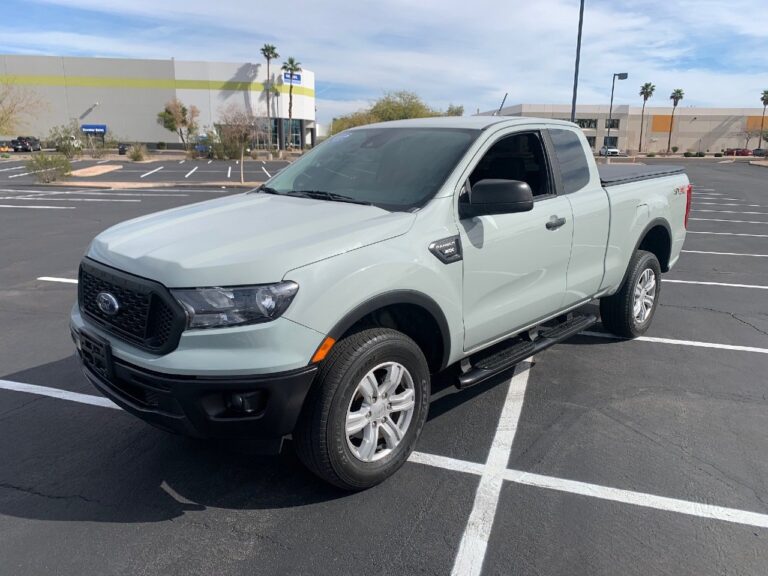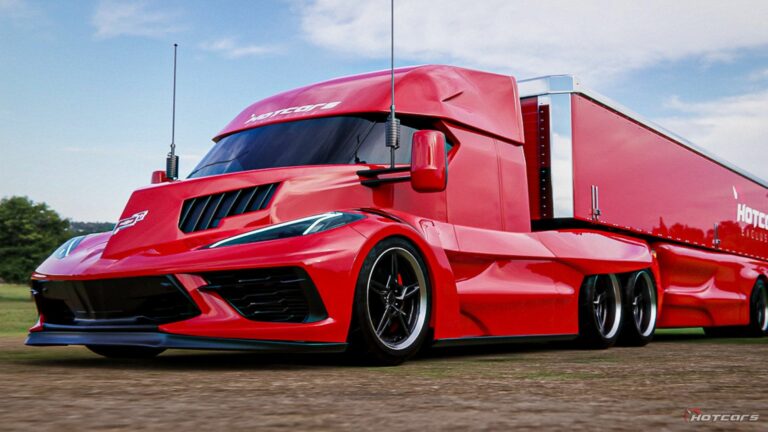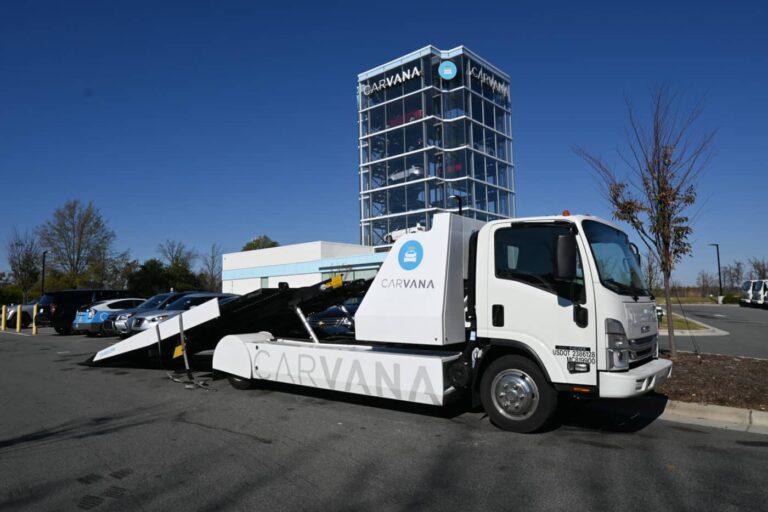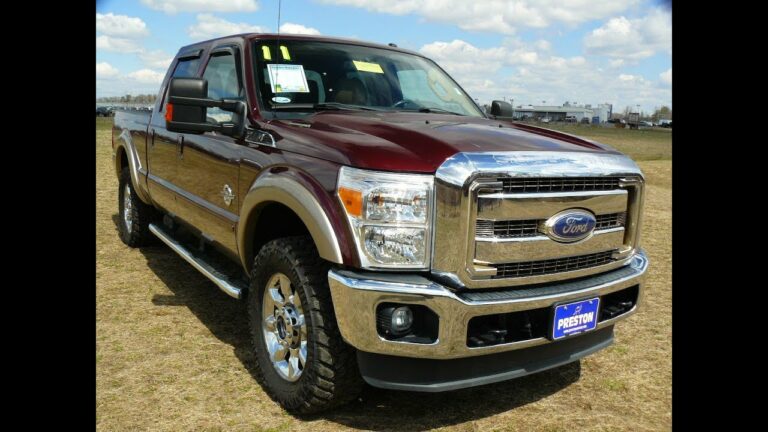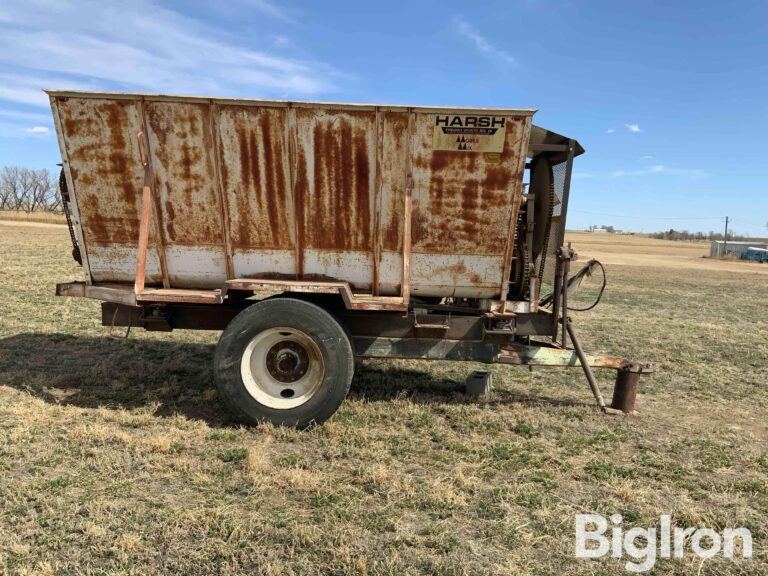Medium Duty Cab And Chassis Trucks For Sale: Your Comprehensive Guide to Custom Commercial Solutions
Medium Duty Cab And Chassis Trucks For Sale: Your Comprehensive Guide to Custom Commercial Solutions cars.truckstrend.com
In the world of commercial vehicles, few options offer the unparalleled versatility and customization potential of medium-duty cab and chassis trucks. These workhorses are the blank canvases upon which businesses build their specialized fleets, from delivery vans and dump trucks to service vehicles and refuse haulers. Unlike integrated commercial vehicles, a cab and chassis truck is sold as a bare-bones unit, comprising the cab (driver’s compartment), engine, transmission, and a sturdy frame, but without a pre-installed rear body. This unique configuration makes them an indispensable asset for businesses requiring tailored solutions to meet specific operational demands.
Understanding the market for "Medium Duty Cab And Chassis Trucks For Sale" is crucial for any enterprise looking to optimize its fleet, reduce costs, and enhance efficiency. This comprehensive guide will delve into what these trucks are, their immense benefits, key considerations for purchase, popular models, and practical advice to navigate the buying process, ensuring you make an informed decision that drives your business forward.
Medium Duty Cab And Chassis Trucks For Sale: Your Comprehensive Guide to Custom Commercial Solutions
What Are Medium Duty Cab and Chassis Trucks?
At its core, a medium-duty cab and chassis truck is a commercial vehicle designed to be customized with a specialized body or equipment after purchase. These trucks typically fall into Gross Vehicle Weight Rating (GVWR) Classes 4 through 6, meaning they have a GVWR ranging from 14,001 to 26,000 pounds. This classification positions them perfectly between lighter-duty pick-ups and heavy-duty semi-trucks, offering a balance of payload capacity, maneuverability, and cost-effectiveness for a vast array of applications.
The basic components include:
- The Cab: The enclosed compartment where the driver and passengers sit. Cabs can range from standard day cabs to extended or crew cabs, offering seating for more personnel.
- The Chassis: The robust frame rails that extend rearward from the cab, providing the foundation for the custom body.
- Powertrain: This includes the engine (diesel or gasoline), transmission (manual or automatic), and driveline components.
- Axles and Suspension: Designed to support significant loads and provide durability.
- Wheels and Tires: Specified for commercial use and load capacities.

Businesses opt for cab and chassis trucks precisely because they offer a modular approach to fleet management. Instead of being constrained by pre-built trucks that may not perfectly fit their needs, they can select a chassis and then partner with an upfitter to install the exact body—be it a box, flatbed, dump bed, utility body, or specialized equipment like a boom lift or a wrecker body.
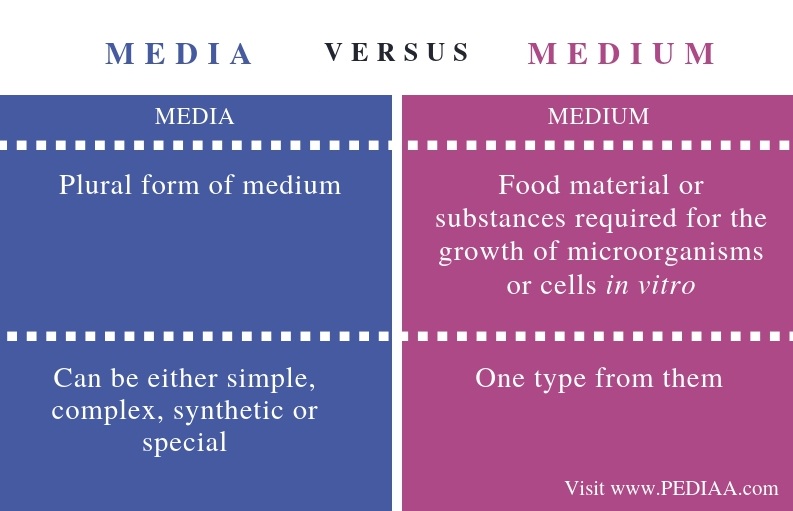
Key Benefits of Opting for a Cab and Chassis Truck
The decision to purchase a cab and chassis truck brings with it a multitude of advantages that can significantly impact a business’s bottom line and operational efficiency:
- Unparalleled Customization: This is the primary benefit. Businesses can design and install a body that perfectly matches their unique requirements, whether it’s specific dimensions, cargo handling features, specialized equipment mounts, or climate control. This ensures maximum efficiency for every task.
- Versatility Across Industries: From landscaping and construction to delivery services, municipalities, and emergency response, cab and chassis trucks are adaptable. A single chassis model can be transformed into a dump truck for debris removal, a refrigerated truck for food delivery, or a flatbed for material transport.
- Cost Efficiency: While the initial purchase of a cab and chassis might seem like only part of the equation, it often proves more cost-effective in the long run. Businesses avoid paying for features or body types they don’t need, and the ability to transfer a custom body to a new chassis later can extend the life of the specialized equipment.
- Optimized Performance: By selecting the right chassis with specific engine, transmission, and axle configurations, businesses can optimize the truck’s performance for its intended purpose—whether it’s maximizing fuel efficiency for long hauls or ensuring robust torque for heavy loads and challenging terrains.
- Enhanced Durability and Longevity: Built for commercial applications, medium-duty chassis are engineered for continuous, heavy-duty work. Their robust construction often translates to a longer service life and better resistance to the wear and tear of demanding jobs compared to lighter-duty alternatives.
- Better Resale Value: A well-maintained cab and chassis, especially from reputable manufacturers, tends to hold its value well due to its inherent adaptability. The chassis itself remains a desirable platform for a new owner to upfit for their own needs.
Important Considerations When Buying Medium Duty Cab and Chassis Trucks
Purchasing a medium-duty cab and chassis truck requires careful planning and an understanding of several critical specifications. A mismatch can lead to operational inefficiencies or costly modifications down the line.
- GVWR (Gross Vehicle Weight Rating): This is paramount. It determines the maximum operating weight of the truck, including the chassis, fuel, passengers, cargo, and the installed body. Ensure the GVWR matches or exceeds your heaviest anticipated loaded weight.
- Wheelbase and Cab-to-Axle (CA) Measurement: The wheelbase is the distance between the front and rear axles. The CA measurement (distance from the back of the cab to the centerline of the rear axle) is crucial for body compatibility. These dimensions directly impact the size and type of body you can install.
- Engine Type (Diesel vs. Gasoline):
- Diesel: Offers superior torque, better fuel economy (especially under load), and longer engine life, making them ideal for heavy hauling and high mileage. They typically have a higher upfront cost.
- Gasoline: Lower initial cost, simpler emissions systems, and often quieter operation. Suitable for lighter loads, shorter routes, and applications where high torque isn’t consistently needed.
- Transmission (Automatic vs. Manual):
- Automatic: Easier to drive, reduces driver fatigue, and is preferred for stop-and-go city driving.
- Manual: Offers more control, can be more fuel-efficient in certain scenarios, and is often favored by experienced drivers for specific applications.
- Axle Ratios: Dictate the balance between pulling power and top-end speed/fuel economy. A higher numerical ratio (e.g., 4.88) provides more torque for heavy loads, while a lower ratio (e.g., 3.73) is better for highway cruising.
- Braking System: Medium-duty trucks often come with hydraulic brakes (similar to passenger cars, but heavier duty) or air brakes (common on heavier trucks, offering more stopping power). Ensure the system is adequate for your loaded weight.
- Suspension: Leaf springs are standard, but air-ride suspensions offer a smoother ride and better cargo protection, especially for delicate loads.
- Cab Type: Day cabs are standard, but crew cabs (four doors, more seating) are available for teams.
- Upfitting Compatibility: Verify that the chassis offers the necessary Power Take-Off (PTO) options, electrical connections, and frame strength to support your intended body and auxiliary equipment.
- New vs. Used: New trucks come with warranties and the latest technology but higher prices. Used trucks offer cost savings but require thorough inspection and consideration of service history.
Popular Manufacturers and Models in the Medium Duty Segment
The market for medium-duty cab and chassis trucks is robust, with several reputable manufacturers offering a range of models to suit diverse needs:
- Ford: The F-Series Super Duty (F-450, F-550) and the larger F-650/F-750 are mainstays, known for their powerful engines, broad configurability, and extensive dealer network.
- Ram: Ram Chassis Cab models (3500, 4500, 5500) offer strong Cummins diesel and HEMI gasoline engine options, providing competitive GVWRs and robust frames.
- Chevrolet/GMC: The Silverado and Sierra 4500HD, 5500HD, and 6500HD trucks offer a compelling package with Duramax diesel and gasoline engine choices, known for their comfortable cabs and strong capabilities.
- International: The CV Series (Class 4/5) and MV Series (Class 6/7) are popular choices, leveraging Navistar’s commercial truck expertise, offering integrated systems and strong dealer support.
- Freightliner: The M2 106 is a highly versatile and popular medium-duty conventional truck, known for its durable construction and wide range of configurations.
- Hino: Hino’s Class 4-7 trucks (e.g., 155, 195, 268) are known for their reliability, fuel efficiency, and strong support network, often preferred for urban delivery and service applications.
- Isuzu: Isuzu’s F-Series (e.g., FTR, FVR) are well-regarded for their maneuverability, fuel-efficient diesel engines, and excellent visibility, making them popular for city operations.
- Kenworth: The T180, T280, and T380 are newer additions, bringing Kenworth’s heavy-duty truck quality and features down to the medium-duty segment, offering premium options.
The Buying Process: Tips for a Smooth Acquisition
Acquiring the right medium-duty cab and chassis truck involves more than just finding one for sale. Follow these steps for a successful purchase:
- Define Your Exact Needs: Before looking at trucks, precisely define your operational requirements. What type of cargo will you haul? What’s the maximum weight? How far will it travel daily? What kind of terrain will it encounter? This clarity will guide your specifications.
- Research and Compare: Look at different manufacturers and models that fit your GVWR and CA requirements. Compare engine options, transmission types, warranty coverage, and available features.
- Budget Comprehensive Costs: Beyond the purchase price of the chassis, factor in the cost of the custom body (upfitting), insurance, maintenance, fuel, and potential driver training.
- New vs. Used Evaluation:
- New: Offers the latest technology, full warranty, and often financing incentives. Higher initial cost.
- Used: Significant cost savings, but requires diligent inspection. Get a pre-purchase inspection by an independent mechanic specializing in commercial trucks. Review service records meticulously.
- Dealer and Upfitter Network: Choose a dealer with a strong reputation for commercial truck sales and service. Ideally, they should have relationships with reputable upfitters, or you should have a trusted upfitter identified. Coordination between the dealer and upfitter is key.
- Test Drive: Always test drive the truck, even if it’s a bare chassis. Assess handling, braking, acceleration, and driver comfort. If buying used, pay close attention to any unusual noises or vibrations.
- Explore Financing Options: Dealerships, banks, and credit unions offer various financing and leasing programs. Compare interest rates and terms to find the best fit for your budget.
- Negotiate: Don’t hesitate to negotiate the price. Be informed about market values and be ready to walk away if the deal isn’t right.
- Understand Warranty and Service Agreements: For new trucks, understand what’s covered. For used, inquire about any remaining manufacturer warranty or extended service plans.
Estimated Price Ranges for Medium Duty Cab and Chassis Trucks For Sale
The price of a medium-duty cab and chassis truck can vary significantly based on manufacturer, model, GVWR class, engine type, features, and whether it’s new or used. The cost of the upfit (the body installation) is separate and can range from a few thousand dollars for a simple flatbed to tens of thousands for complex specialized bodies.
Here’s an estimated price range for the chassis only (excluding upfitting costs):
| Manufacturer/Model (Examples) | GVWR Class | New Price Range (Est.) | Used Price Range (Est.) | Key Features/Notes |
|---|---|---|---|---|
| Ford F-450/F-550 Chassis Cab | Class 4/5 | $55,000 – $80,000+ | $25,000 – $55,000+ | Popular, powerful diesel/gas engines, wide dealer network. |
| Ram 4500/5500 Chassis Cab | Class 4/5 | $50,000 – $75,000+ | $20,000 – $50,000+ | Strong Cummins diesel option, robust frame. |
| Chevy Silverado/GMC Sierra 4500HD/5500HD | Class 4/5 | $55,000 – $85,000+ | $25,000 – $60,000+ | Comfortable cabs, powerful Duramax diesel/gas options. |
| Hino 195/268 | Class 5/6 | $70,000 – $100,000+ | $30,000 – $70,000+ | Reliable, fuel-efficient, good for urban delivery. |
| Isuzu FTR/FVR | Class 6/7 | $75,000 – $110,000+ | $35,000 – $80,000+ | Excellent maneuverability, often cab-over-engine design. |
| International MV Series | Class 6/7 | $80,000 – $120,000+ | $40,000 – $90,000+ | Durable, integrated systems, strong commercial support. |
| Freightliner M2 106 | Class 6/7 | $85,000 – $130,000+ | $45,000 – $100,000+ | Highly versatile, robust, popular for various upfits. |
Note: These are estimated ranges and can fluctuate based on market conditions, specific configurations, optional features, and geographical location. Used prices depend heavily on mileage, condition, and maintenance history.
Frequently Asked Questions (FAQ) about Medium Duty Cab and Chassis Trucks
Q1: What is the main difference between a chassis cab and a cutaway van?
A1: A chassis cab is a truck with an open frame behind the cab, designed for heavy-duty, custom body installation. A cutaway van (like a Ford E-Series or Chevy Express cutaway) has a completed front end and cab, but the rear is "cut away" to allow for a box body or RV conversion. Chassis cabs are generally more robust and have higher GVWRs.
Q2: Do I need a special license to drive a medium-duty cab and chassis truck?
A2: In most U.S. states, a standard Class D (regular) driver’s license is sufficient to operate Class 4, 5, and 6 medium-duty trucks, as long as their GVWR is under 26,001 pounds and they are not carrying hazardous materials or pulling a trailer over 10,000 pounds GVWR (which would require a CDL). Always check your specific state’s DMV regulations.
Q3: How long do medium-duty cab and chassis trucks typically last?
A3: With proper maintenance, these trucks are built to last. Many can easily exceed 300,000 to 500,000 miles, and some even more, especially those with diesel engines. Longevity depends heavily on the application, driving habits, and adherence to maintenance schedules.
Q4: What is "upfitting" and why is it important?
A4: Upfitting is the process of installing a specialized body or equipment onto the bare chassis. It’s crucial because the choice of body determines the truck’s function. Proper upfitting ensures the body is safely and effectively integrated with the chassis, considering weight distribution, electrical systems, and structural integrity.
Q5: Where can I find medium-duty cab and chassis trucks for sale?
A5: You can find them at authorized commercial truck dealerships, large truck sales centers, online commercial vehicle marketplaces (e.g., TruckPaper, CommercialTruckTrader), and sometimes at public auctions. It’s often best to start with a specialized commercial truck dealer as they can guide you through the chassis selection and upfitting process.
Conclusion
Medium-duty cab and chassis trucks are the backbone of countless businesses, offering an unparalleled blend of power, versatility, and customization. Their ability to be tailored precisely to a company’s operational needs makes them a smart investment for diverse industries. From the initial definition of your requirements to the final upfitting, every step in acquiring one of these vehicles demands careful consideration and thorough research.
By understanding the benefits, key specifications, market offerings, and the detailed buying process, you can confidently navigate the world of "Medium Duty Cab And Chassis Trucks For Sale." Investing in the right chassis ensures not only immediate operational efficiency but also long-term reliability and adaptability, empowering your business to haul, deliver, and perform with optimal effectiveness for years to come.

